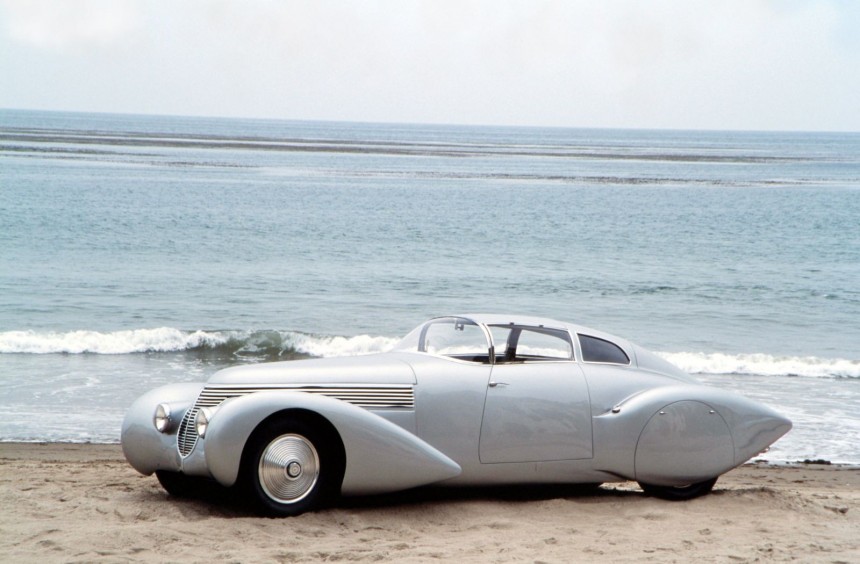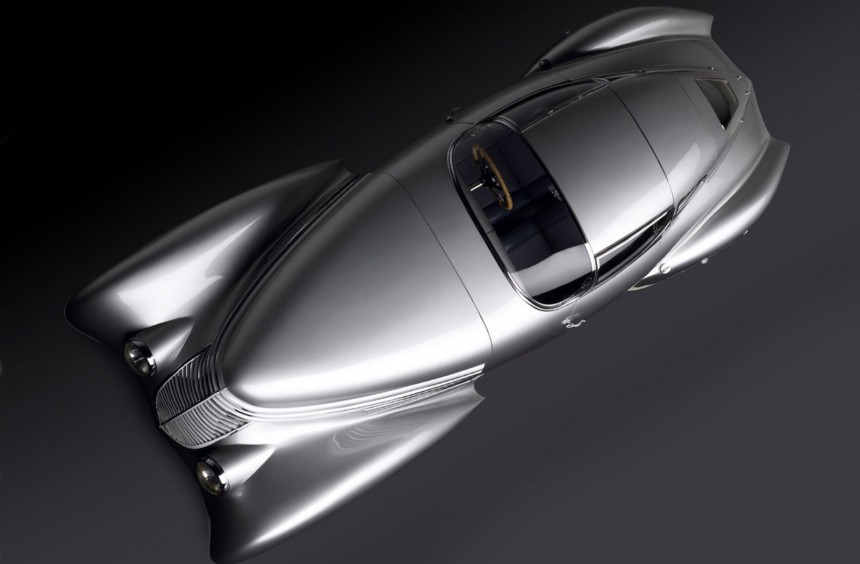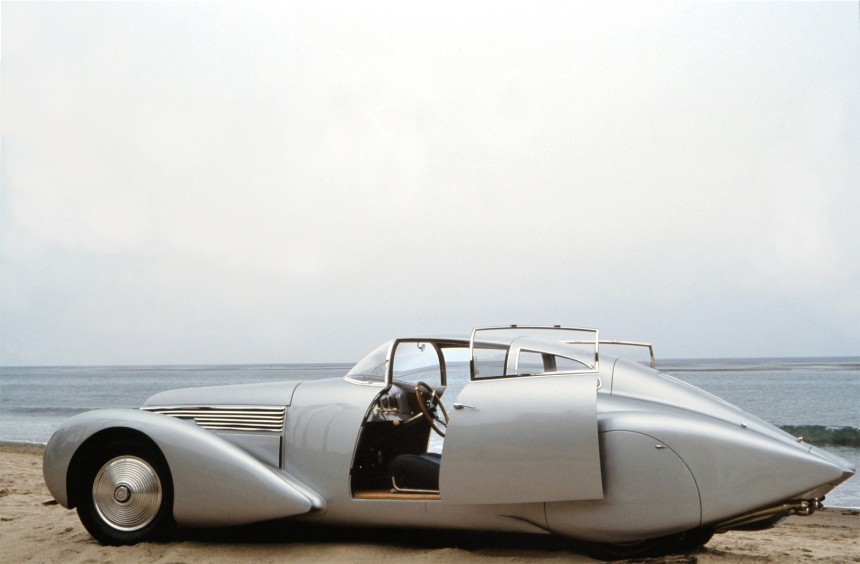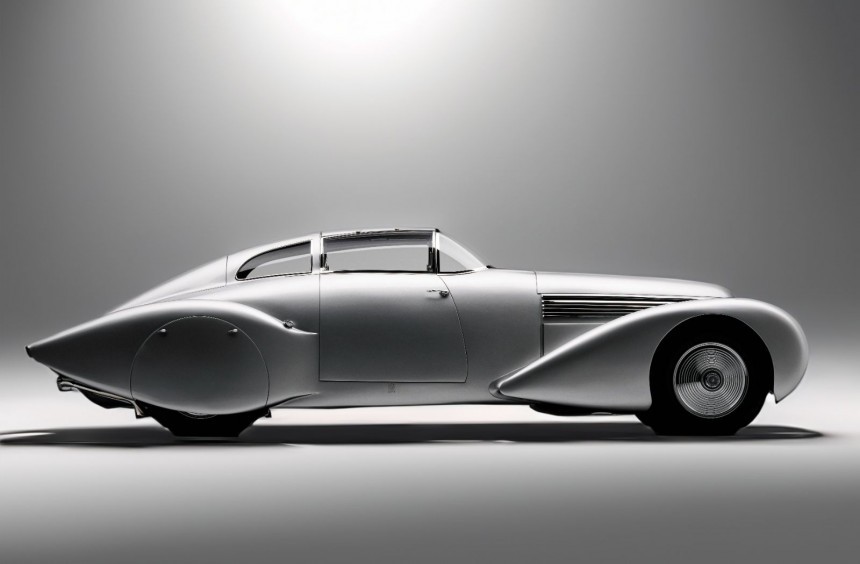Throughout history, many of humanity's most precious masterpieces were inspired by the love for a woman. This is the case of the Dubonnet Xenia, one of the most breathtaking cars ever conceived.
During the 1930s, automobiles were improving in many ways, but mass-produced models didn't really stand out from one another in terms of aesthetics.
Nevertheless, there were a few exceptions made possible by the skilled hands of renowned coachbuilders who created unique bodies to make some cars stand out from the crowd.
Another famous exception was Bugatti's Type 57-based Atlantic, a series of four coupes often called the most beautiful vehicles ever built.
But, when discussing some of the most beautiful vehicles ever built, many so-called vintage connoisseurs forget about the Hispano-Suiza H6B Dubonnet Xenia - another timeless beauty born during the 1930s.
Born in 1897 in Paris, France, André Dubonnet was a man of many talents. On board a SPAD XIII biplane, he became a flying ace during the First World War. Then, after the war ended, he became an Olympic bobsledder and a race car driver, competing for the likes of Bugatti and Hispano-Suiza.
The Frenchman was also a talented engineer who earned worldwide fame for developing an innovative suspension system in the early 1930s.
Dubbed Dubonnet suspension, the system became widely popular for the next two decades, with companies like Fiat, Alfa Romeo, and General Motors employing it.
But, before selling the rights to the patented system, André Dubonnet showcased it on a custom Hispano-Suiza H6B chassis at the 1932 Paris Motors Show.
After that, he started focusing on aerodynamics and, along with aerodynamicist Jean Andreau, created the 1935 Dubonnet Dolphin, a Ford-based prototype that mixed speed with fuel efficiency.
However, his masterpiece came in 1938, two years after his second wife Xenia (née Howard-Johnson) passed away.
After Xenia's passing, the grieving Dubonnet decided to focus on turning his 1932 Hispano-Suiza H6B prototype into the world's most beautiful car and name it after her.
While he worked on the chassis, Dubonnet enlisted Jean Andreau to help design the new streamlined body, while Jacques Saoutchik and his famed coachbuilding firm were tasked with turning it into reality.
The result was a gorgeous structure with multiple aviation- and Art Deco-inspired cues like a wraparound windshield, a large slotted grill that extended on both sides of the nose, below the hood, and unconventional doors that slid out towards the tail.
Moreover, the Xenia's body featured flared front fenders that tapered off in a teardrop shape. The same beautiful and aerodynamically efficient design was also used for the covered rear fenders and tail.
As mentioned earlier, the Xenia was built on a Hispano-Suiza H6B frame chassis initially developed in Spain.
While today, the only renowned Spanish carmaker is VW's SEAT, back then, Hispano-Suiza was one of the most respected luxury automobile manufacturers in the world.
Its H6 series (mostly assembled at the company's French plant) was Hispano-Suiza's flagship range during the 1920s and early 1930s, while H6B was the most powerful iteration.
The H6B chassis of the Xenia came with servo-assisted alloy brake drums and was modified to include Dubonnet's patented, independent coil-sprung suspension system on all four wheels.
Its Spanish-designed engine was an 8.0-liter straight-six that Dubonnet' also improved. Based on a lightweight aluminum block and featuring a billet steel crankshaft, it was upgraded to produce 160 hp.
With the low drag coefficient of the Saoutchik aluminum body, the Xenia could reach a top speed of 110 mph (177 kph), which was pretty impressive for the heavy one-off.
The Xenia was completed in 1938. Although where it ranked among the most beautiful cars ever built was debatable, the one-off was unquestionably a work of automotive art and a fitting tribute to Dubonnet's late wife.
The Frenchman kept the car for the years that followed, but after the start of World War II and the ensuing invasion of France in 1940, he was forced to hide it.
Thankfully, it survived the global conflict and resurfaced in the summer of 1946 when it led a parade celebrating the reopening of the Saint-Cloud highway tunnel outside of Paris.
In the 1960s, Dubonnet sold the Xenia to Alain Balleret, president of the French Hispano-Suiza Club, who restored it to its former glory.
Three decades later, it crossed the Atlantic after American collector Charles Morse purchased it. Morse restored it again, but in 2003, he decided to part ways with the Xenia, selling it to Peter W. Mullin.
The masterpiece can be admired at the Mullin Automotive Museum in Oxnard, California, where it currently resides.
Developed in an era when most passenger cars looked more or less the same, the innovative and breathtakingly gorgeous Hispano-Suiza H6B Dubonnet Xenia is a work of art on four wheels that deserves to be remembered and cherished.
If you want to learn more about this forgotten legend and see it roaming the roads, we recommend watching the following episode of Jay Leno's Garage.
Nevertheless, there were a few exceptions made possible by the skilled hands of renowned coachbuilders who created unique bodies to make some cars stand out from the crowd.
Another famous exception was Bugatti's Type 57-based Atlantic, a series of four coupes often called the most beautiful vehicles ever built.
But, when discussing some of the most beautiful vehicles ever built, many so-called vintage connoisseurs forget about the Hispano-Suiza H6B Dubonnet Xenia - another timeless beauty born during the 1930s.
André Dubonnet's masterpiece
The Frenchman was also a talented engineer who earned worldwide fame for developing an innovative suspension system in the early 1930s.
Dubbed Dubonnet suspension, the system became widely popular for the next two decades, with companies like Fiat, Alfa Romeo, and General Motors employing it.
But, before selling the rights to the patented system, André Dubonnet showcased it on a custom Hispano-Suiza H6B chassis at the 1932 Paris Motors Show.
After that, he started focusing on aerodynamics and, along with aerodynamicist Jean Andreau, created the 1935 Dubonnet Dolphin, a Ford-based prototype that mixed speed with fuel efficiency.
However, his masterpiece came in 1938, two years after his second wife Xenia (née Howard-Johnson) passed away.
Honoring his late wife by creating the most beautiful car in the world
While he worked on the chassis, Dubonnet enlisted Jean Andreau to help design the new streamlined body, while Jacques Saoutchik and his famed coachbuilding firm were tasked with turning it into reality.
The result was a gorgeous structure with multiple aviation- and Art Deco-inspired cues like a wraparound windshield, a large slotted grill that extended on both sides of the nose, below the hood, and unconventional doors that slid out towards the tail.
Moreover, the Xenia's body featured flared front fenders that tapered off in a teardrop shape. The same beautiful and aerodynamically efficient design was also used for the covered rear fenders and tail.
French flair and innovations combined with Spanish engineering
While today, the only renowned Spanish carmaker is VW's SEAT, back then, Hispano-Suiza was one of the most respected luxury automobile manufacturers in the world.
Its H6 series (mostly assembled at the company's French plant) was Hispano-Suiza's flagship range during the 1920s and early 1930s, while H6B was the most powerful iteration.
The H6B chassis of the Xenia came with servo-assisted alloy brake drums and was modified to include Dubonnet's patented, independent coil-sprung suspension system on all four wheels.
Its Spanish-designed engine was an 8.0-liter straight-six that Dubonnet' also improved. Based on a lightweight aluminum block and featuring a billet steel crankshaft, it was upgraded to produce 160 hp.
With the low drag coefficient of the Saoutchik aluminum body, the Xenia could reach a top speed of 110 mph (177 kph), which was pretty impressive for the heavy one-off.
It survived WWII and currently resides in the US
The Frenchman kept the car for the years that followed, but after the start of World War II and the ensuing invasion of France in 1940, he was forced to hide it.
Thankfully, it survived the global conflict and resurfaced in the summer of 1946 when it led a parade celebrating the reopening of the Saint-Cloud highway tunnel outside of Paris.
In the 1960s, Dubonnet sold the Xenia to Alain Balleret, president of the French Hispano-Suiza Club, who restored it to its former glory.
Three decades later, it crossed the Atlantic after American collector Charles Morse purchased it. Morse restored it again, but in 2003, he decided to part ways with the Xenia, selling it to Peter W. Mullin.
The masterpiece can be admired at the Mullin Automotive Museum in Oxnard, California, where it currently resides.
Developed in an era when most passenger cars looked more or less the same, the innovative and breathtakingly gorgeous Hispano-Suiza H6B Dubonnet Xenia is a work of art on four wheels that deserves to be remembered and cherished.
If you want to learn more about this forgotten legend and see it roaming the roads, we recommend watching the following episode of Jay Leno's Garage.















